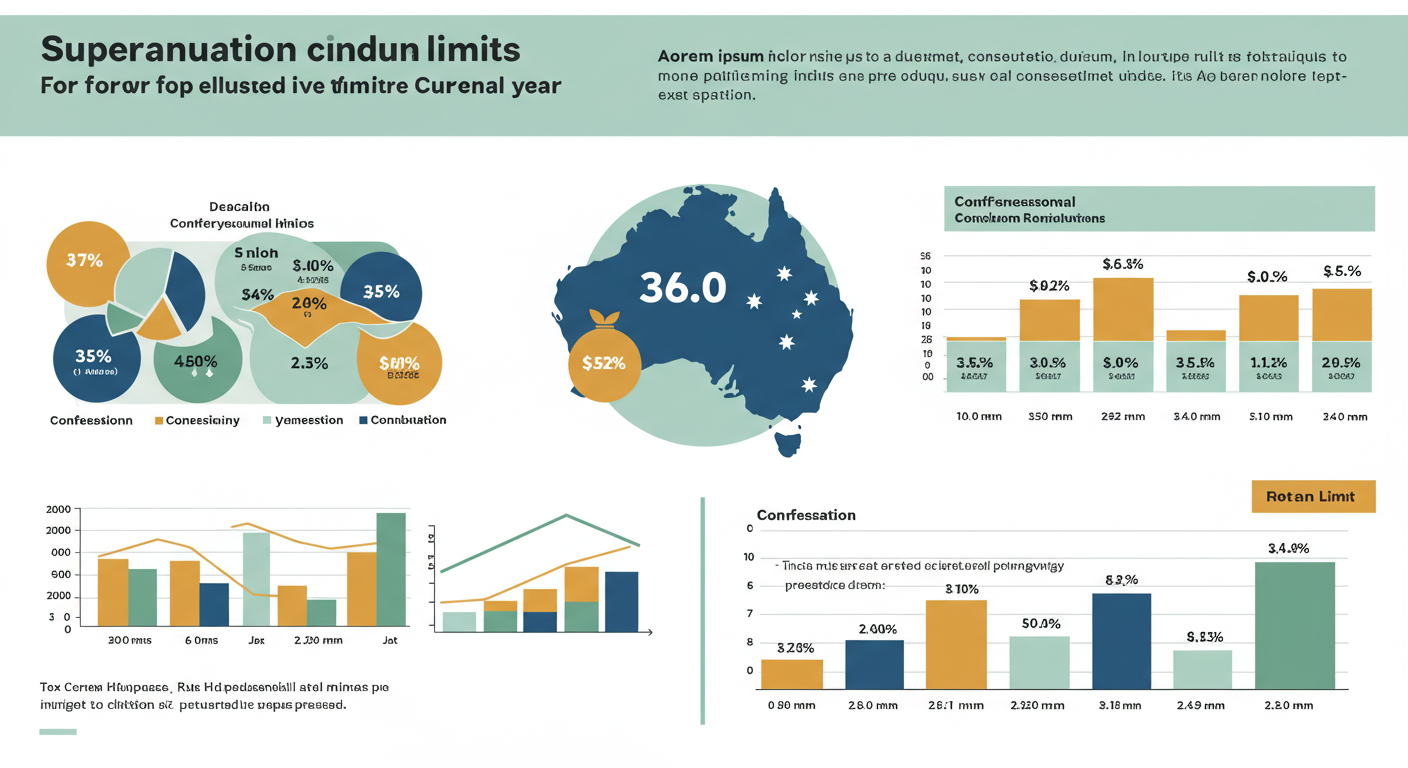Your retirement nest egg doesn’t have to be a mystery. Here’s everything you need to know about superannuation contribution limits to secure your family’s financial future.
After 20 years helping Australian families navigate their retirement planning, I’ve seen too many people treat super like a “set and forget” investment. That’s a costly mistake that could mean the difference between a comfortable retirement and scraping by on the pension.
Let’s dive into how superannuation really works, what the contribution limits mean for your family, and most importantly, how you can maximise this incredible wealth-building tool.
What Is Superannuation Really?
Think of superannuation as your future self’s best friend. It’s a long-term savings vehicle designed specifically for retirement, backed by generous government tax concessions. The Australian government essentially forces you to save 11% of your income (rising to 12% by July 2025) through the Superannuation Guarantee (SG), but here’s the kicker, you can add much more if you’re smart about it.
I remember Anabel, a teacher from Melbourne, who came to me five years ago completely overwhelmed by her super statements. “I just ignore them,” she confessed. Fast forward to today, and she’s on track to retire with over $800,000 in super, this happened because we implemented a simple strategy using voluntary contributions.
The Three Pillars of Australia’s Retirement System
Australia’s retirement system stands on three pillars:
- The Age Pension – Government safety net.
- Superannuation – This is your main retirement savings.
- Personal Savings –Additional investments and savings.
According to the Australian Government’s Treasury, superannuation is designed to be the primary source of retirement income for most Australians, with the Age Pension providing a safety net for those who need it.
How Superannuation Works
The Superannuation Guarantee
Every time you receive a payslip, your employer must contribute at least 11% of your ordinary time earnings into your super fund. This isn’t extra money on top of your salary – it’s part of your total employment package. From 1 July 2025, this increases to 12%.
Current SG Rates:
- 2024-25: 11%
- 2025-26 onwards: 12%
The Tax Benefits That Make Super Shine
Here’s where superannuation becomes incredibly powerful. The tax treatment of super contributions and earnings is far more favourable than regular investments:
- Contribution Tax: Most super contributions are taxed at just 15% (compared to your marginal tax rate which could be up to 47%)
- Earnings Tax: Investment earnings inside super are taxed at a maximum of 15%
- Pension Phase: Once you retire and start drawing a pension, your super earnings are completely tax-free!
Let me show you why this matters with real numbers.
Understanding superannuation contribution limits
This is where many families miss out on thousands of dollars in potential retirement savings. There are two main types of contributions, each with different limits and tax treatments.
Concessional Contributions (Before-Tax)
These are contributions made from your pre-tax income, including:
- Employer SG contributions
- Salary sacrifice contributions
- Personal deductible contributions (if you’re eligible)
2024-25 Concessional Cap: $27,500
Here’s a practical example: If you earn $80,000 and your employer contributes the standard 11% ($8,800), you can still make an additional $18,700 in concessional contributions through salary sacrifice or personal deductible contributions.
Non-Concessional Contributions (After-Tax)
These are contributions made from your after-tax income with no additional tax deduction:
2024-25 Non-Concessional Cap: $110,000
But here’s a little-known gem – you can bring forward up to three years’ worth of non-concessional contributions if you’re under 67, giving you a potential $330,000 contribution in one year!
This bring-forward rule is particularly valuable for families who receive windfalls like inheritance, work bonuses, or property sales. I had a client, James, who sold his investment property and used the bring-forward rule to contribute $300,000 to his super at age 45. The tax savings on future earnings were enormous so we calculated and he’d save over $180,000 in tax over 20 years compared to investing the same amount outside super.
However, there’s a catch: your total super balance must be under $1.9 million to access the full bring-forward amount. If your balance is between $1.7-1.9 million, you can only bring forward two years ($220,000), and if it’s above $1.9 million, you can’t make non-concessional contributions at all.
The Carry-Forward Rule: Your Second Chance
Since 2018, you can use unused concessional contribution cap space from the previous five years – but only if your total super balance is under $500,000. This is absolute gold for people whose income fluctuates or who want to make larger contributions later in their careers.
Super Maximizing Strategies
Strategy 1: Salary Sacrifice – The Tax Arbitrage Play
Let’s say you’re earning $90,000 and paying 32.5% tax (including Medicare levy). Instead of receiving that money as salary, you salary sacrifice $10,000 into super.
Without Salary Sacrifice:
- Extra salary: $10,000
- Tax paid: $3,250
- Take-home: $6,750
With Salary Sacrifice:
- Super contribution: $10,000
- Tax in super: $1,500
- Net benefit: $8,500
You’ve just gained $1,750 simply by redirecting money through your super fund!
Strategy 2: The Spouse Contribution Tax Offset
If your partner earns less than $40,000, you can contribute up to $3,000 to their super and claim an 18% tax offset (maximum $540). This is particularly powerful for families with one high earner.
Think about it – you’re essentially getting a guaranteed 18% return on your investment immediately, plus all the long-term benefits of having money in the super system. The contribution also helps balance super between spouses, which can be crucial for pension eligibility and estate planning.
Here’s how it works: if your spouse earns $30,000, you can contribute $3,000 to their super and receive a $540 tax offset. The contribution phases out gradually as their income increases, disappearing completely once they earn over $43,445. This strategy works particularly well for families where one parent has taken time off work for childcare or is working part-time.
Strategy 3: Government Co-Contributions
For those earning less than $58,445, the government will match your personal super contributions dollar-for-dollar up to $500. If you’re eligible, this is literally free money and should not be on the table!
The full $500 co-contribution is available to those earning up to $43,445, then it phases out by 3.33 cents for every dollar earned above this threshold. Even if you’re earning $58,000, you’ll still get a small co-contribution – every bit helps!
I’ve seen too many eligible families miss out on this because they don’t make personal contributions. Remember, this only applies to personal contributions made from your after-tax income – salary sacrifice and employer contributions don’t count. The contribution must also be within your non-concessional cap to be eligible.
The Power of Compound Growth.
Why Starting Early Matters
Let me share the story of two brothers, Mark and David. Mark started contributing an extra $2,000 per year to his super at age 25. David waited until 35 to start the same contributions.
Mark’s Journey (Starting at 25):
- Annual contribution: $2,000
- Years contributing: 40
- Total contributions: $80,000
- Final balance at 65: $587,000
David’s Journey (Starting at 35):
- Annual contribution: $2,000
- Years contributing: 30
- Total contributions: $60,000
- Final balance at 65: $328,000
Assumptions: 7% annual return, no fees for simplicity
Mark contributed just $20,000 more but ended up with $259,000 more in retirement. That’s the magic of compound growth!
Common Super Mistakes That Cost Families Thousands
1. Having Multiple Super Accounts
I’ve seen clients with five different super accounts, each charging fees. The Australian Taxation Office estimates the average Australian has 2.8 super accounts. Consolidating these could save hundreds in fees annually.
2. Ignoring Investment Options
Most people stick with the default “balanced” option, but this might not suit your age or risk tolerance. A 25-year-old in a conservative option is likely missing out on decades of growth potential.
3. Not Maximising Contribution Caps
According to APRA data, less than 5% of Australians maximise their concessional contribution caps. This represents billions of dollars in lost retirement savings across the country.
Age-Based Super Strategies
In Your 20s and 30s
- Focus on growth investments
- Use salary sacrifice for tax benefits
- Consider the government co-contribution if eligible
- Don’t stress about exact amounts, remember that consistency beats perfection
In Your 40s and 50s
- Maximise concessional contributions
- Consider catch-up contributions using carry-forward rules
- Review investment strategy (still plenty of time for growth)
- Plan for transition to retirement
Approaching Retirement (55+)
- Understand transition to retirement pensions
- Consider non-concessional contributions before preservation age
- Plan for tax-free pension phase
- Review estate planning and beneficiary nominations
The 2024-25 Super Landscape: What’s Changed
Recent changes you need to know about:
- Concessional cap increased from $27,500 (unchanged for 2024-25)
- SG rate remains at 11% until July 2025
- Work test abolished for those 67-74 for non-concessional contributions
- Downsizer contributions now available from age 55 (previously 60)
Super and Estate Planning: Don’t Forget This Critical Step
Here’s something that keeps me up at night – the number of families who haven’t updated their super beneficiary nominations. Super doesn’t automatically form part of your estate, so without proper nominations, your family could face lengthy legal battles.
Key points:
- Update beneficiary nominations regularly
- Consider binding vs non-binding nominations
- Understand tax implications for different beneficiaries
- Review after major life events
Creating Your Super Strategy
- Find your super accounts using the ATO’s online services
- Calculate your current trajectory to see if it will be enough?
- Identify your contribution capacity within the caps
- Consider your investment options, ask yourself if your allocation match your age and goals?
- Set up some regular reviews at least annually.
Superannuation isn’t just another investment – it’s your ticket to financial freedom in retirement. The tax advantages are so significant that maximising your super contributions should be a priority for every Australian family.
Remember Sarah, the teacher I mentioned earlier? She’s now contributing $15,000 annually through salary sacrifice and is on track to retire with dignity. The best part? She barely notices the impact on her take-home pay because of the tax savings.
Your future self will thank you for taking action today. Whether you’re 25 or 55, there are strategies to boost your super and secure your family’s financial future.
Don’t let superannuation remain a mystery. Take control, understand the rules, and watch your retirement savings grow. After all, you’ve got a lifetime ahead of you, make sure you can afford to enjoy it!
This information is general in nature and doesn’t constitute personal financial advice. Consider seeking professional advice tailored to your specific circumstances from a qualified financial adviser.
Key Takeaways:
- Superannuation combines forced savings with generous tax concessions
- Contribution limits exist but most Australians don’t maximise them
- Starting early amplifies the power of compound growth
- Regular reviews and strategic contributions can add hundreds of thousands to your retirement savings
- Professional advice can help navigate the complexities and maximise your outcomes
For the most current information on superannuation rules and limits, visit the Australian Taxation Office or consult with a qualified financial adviser.














